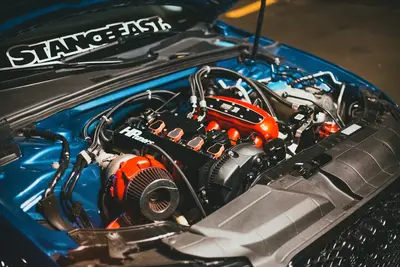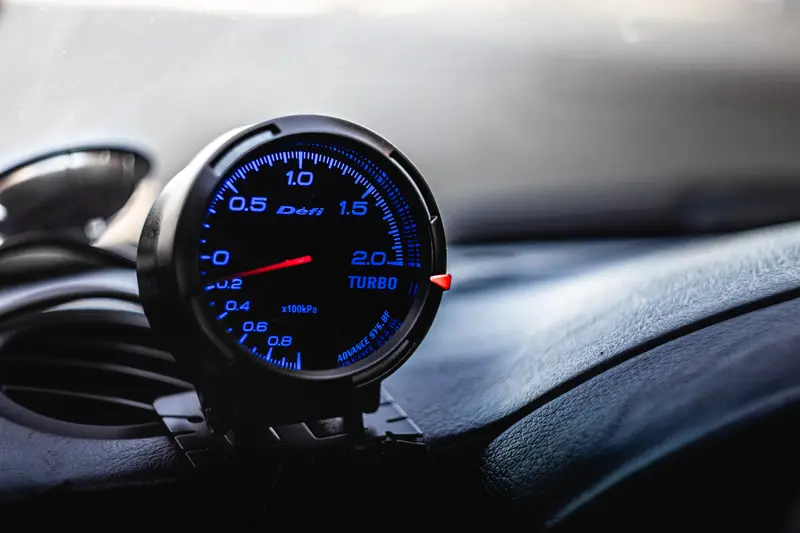Home > Articles > Automotive Trends
by Leland Morrison, on 16 October 2023


9 things you can do to make your car faster
Weight reduction
The more weight you have to pull around the slower your car gets. Higher weight is the primary limiting factor on speeds up to about 100 km/h when wind resistance starts becoming more of a problem. Removing weight is perhaps one of the easiest and often cheapest ways of adding performance. This is typically done by removing any unnecessary panels, removing the passenger seats and even removing luxuries like the radio and air conditioning. Interestingly some of the Lotus performance cars allow you to add a radio or AC back as an optional extra. Removing weight will also result in better fuel economy
ECU
The electronic control unit (ECU) controls how much fuel is added to the mix. The most basic of ECU's work by monitoring the amount of airflow that comes into the engine and tells the injectors to inject an appropriate amount of fuel. Since most car buyers have fuel efficiency in mind the tuning appropriately caters for a good fuel to power ratio. Simply increasing the amount of fuel injected can result in power gains, but more often tuners send their car to the dyno to be tuned. The dyno is where your car is stationary, but the wheels are moving against a dynamo. The dynamo is made to add resistance and measure the power output of the car. The guys doing the dyno tuning can then alter the amount of fuel at specific revs and test the resulting power output
Ports
Since production engines are mass produced not a lot of effort is put into the final finishes of the engine. The result is that the engine has rough surfaces and hard edges. Normally this is fine, but for the air intake ports it can cause drag or airflow resistance. Taking some time to smooth out these ports can help the air flow smoother and result in some minor power gains
Free flow exhaust
Air intake isn't the only problem an engine faces. Getting the air out on the other side can be just as much of an issue. The reason is that typical exhaust systems strike a balance between letting air out and controlling the sound of the car. To control the sound the exhaust has one or two chambers that control the sound called silencers. These chambers work by increasing the volume inside the exhaust to contain the hot air coming out of the engine. An exhaust with a good balance typically has the same volume as the cylinders combined ex. a 2L car will need an exhaust of 2000cc to contain the noise effectively. The silencers are however not aerodynamically optimal, since it is basically a box. Making the exhaust straighter and wider works far better for letting out gas, but does very little for noise control, so a free flow exhaust will make the car quite a bit louder. You could simply remove the exhaust entirely, but then your average car will sound like a race day V8.


Turbo
The next way to get around the air intake problem is by simply forcing in more air. A turbocharger works by using exhaust gas to spin up a fan which blows more air into the cylinders. The turbo has two chambers, one linked to the exhaust and one linked to the air intake. Both chambers have a little fan that is connected to each other by a rod. When the one spins up the other one spins up as well. The result is a very effective way of using waste air to power the engine. Since more air is going into the cylinders, a few accompanying modifications need to be made. First, more air requires more fuel. This we have covered in the ECU section. Next, forcing in more air will cause the compression ratio to increase and often requires the native compression ratio of the motor to be reduced. This is achieved by installing lower compression cylinders. This isn't all. The engine will be running much hotter and you may need to add an intercooler and oil cooler. Waste air also needs to be dealt with. When shifting gears the turbo doesn't stop spinning and keeps trying to force in more air. The excess air will be forced back through the turbo which results in an interesting sounding whrrr. Adding a waste gate solves this issue. The waste gate or dump valve will open when the pressure gets too high, and dumps the excess air.
Supercharger


A supercharger works almost the same as a turbo, but instead of leveraging exhaust gas it has a belt linked directly to the engine, so as the engine revs up it starts blowing in extra air. Since the supercharger is directly linked to the rotation of the crank, it does not have the same lag as a turbo, known as turbo lag, which means they have a more even power curve, but less of a racey feel
Cams
Cars are typically tuned to idle properly and drive well in the low rev range, but as the engine revs up the amount of fuel entering the cylinders can't keep up. The reason being that since the valves open and close more often, the amount of time they stay open decreases up the rev range. The solution is to install a cam (or valve lifter) that keeps the valves open for longer, but with this modification comes issues in the lower rev range. Engines with a performance cam can often struggle to idle or have trouble getting away from low revs due to over-fueling, a problem that can sometimes be accompanied by exhaust flames. Since all the fuel is not burned in the combustion cycle, some of it gets ejected into the exhaust, and when the exhaust gets hot the fuel can ignite, which brings us to a more elegant solution.
VVT
Variable valve timing, or v-tech is a technique where the valves are kept open for longer at high revs. The mechanic behind it is quite clever. A valve lifter is used that has a slightly longer middle piece. The middle part is movable and normally collapsed. As the engine revs up the oil pressure increases and the middle part of the lifter pushes into place, effectively lengthening the lifter which in turn lifts the valve higher, letting in more fuel. The result is a slight kick often at around 4 000 rpm
Second carburetor opening
Older cars used a similar technique, but instead of changing valve timings the carburator had a second opening that would only open under high revs
More articles on Automotive Trends
The Rising Trend: Subcompact Luxury Cars